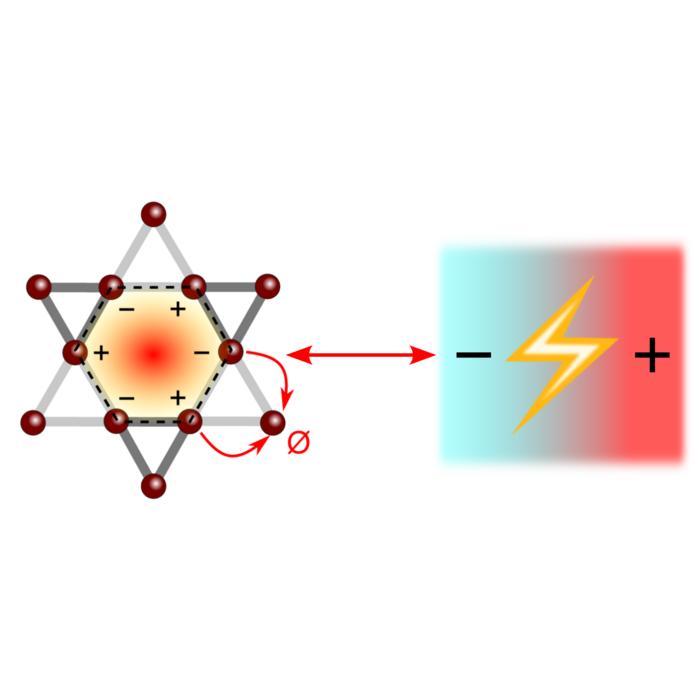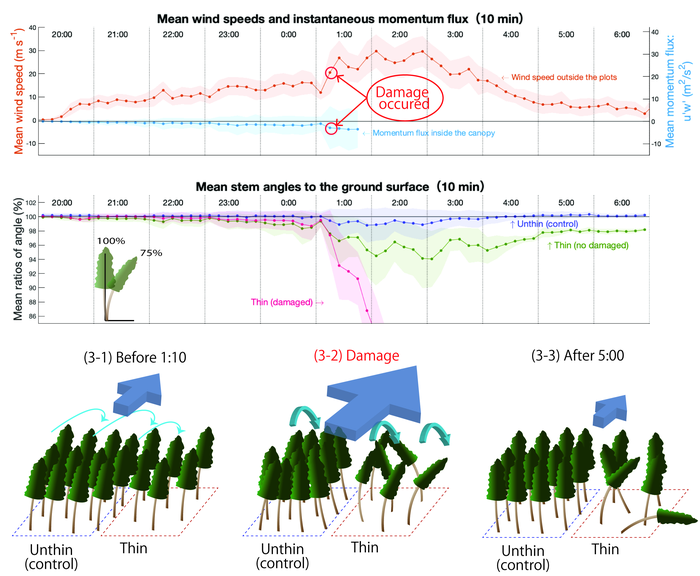For over two centuries, the Seebeck effect has intrigued physicists by demonstrating how temperature differences within materials can be directly converted into electrical voltage. Discovered by Thomas Seebeck more than 200 years ago, this phenomenon underpins thermoelectricity—the ability of certain materials to generate electricity simply by experiencing a heat differential. Although thermoelectric generators have found niche applications, such as in space missions and specialized power systems, their widespread use in replacing conventional power plants has long been hindered by persistent inefficiencies inherent in known materials. However, an innovative approach by researchers at TU Wien might finally pave the way toward a new era of thermoelectric technology, one that leverages exotic geometrical and quantum effects to push performance boundaries beyond previously accepted limits.
In the heart of this breakthrough lies a team led by Professor Andrej Pustogow at the Institute of Solid State Physics. Their work centers around reimagining the classical understanding of thermoelectricity by exploring metallic materials traditionally overlooked in this field. “Despite decades of optimism and research into semiconductors for thermoelectric applications, the fundamental performance ceiling has remained stubbornly consistent,” Pustogow notes. “Our approach challenges that status quo by focusing on metallic systems, which were widely deemed unsuitable because of their balanced positive and negative charge carriers cancelling out voltage generation.” This paradigm shift has allowed them to unlock thermoelectric potential in previously uncharted metallic compounds.
The cornerstone of thermoelectricity rests on how charge carriers—namely electrons and holes—move within a material under a thermal gradient. In semiconductors, where predominantly one type of charge carrier prevails, heating one side causes those charges to diffuse differently than on the cooler side, creating a voltage difference. Metals, conversely, contain both positive and negative carriers that tend to neutralize each other’s thermally induced movements, resulting in negligible net voltage. The core challenge, then, is to decouple this balancing act by disrupting the synchronized flow of oppositely charged carriers.
.adsslot_s56RO7TkJY{ width:728px !important; height:90px !important; }
@media (max-width:1199px) { .adsslot_s56RO7TkJY{ width:468px !important; height:60px !important; } }
@media (max-width:767px) { .adsslot_s56RO7TkJY{ width:320px !important; height:50px !important; } }
ADVERTISEMENT
Pustogow’s team has ingeniously conceptualized the charge carriers’ transport like vehicles on a multilane highway—each lane representing a carrier type moving in parallel. By introducing deliberate “traffic jams” on one lane, positive and negative carriers can be made to traverse at differing speeds. This traffic congestion analogy maps to real physical mechanisms where certain charge carriers face localized immobilization due to engineered defects or intrinsic material properties, thereby skewing the balance and generating substantial voltages even in metals.
A particularly fascinating facet of this research is the exploitation of a geometric pattern known as the kagome lattice—a configuration reminiscent of woven Japanese bamboo baskets featuring an interlaced arrangement of triangles and hexagons. This “geometrical frustration” creates unusual electronic properties, including highly localized and immobilized charges within the lattice’s motifs. Such spatial charge confinement generates an asymmetric mobility landscape for electrons and holes, which is ideally suited to enhancing thermoelectric performance.
The kagome lattice’s unique quantum mechanical effects cause one subset of carriers to become effectively trapped, disrupting the natural compensation between positive and negative charges. In the case of nickel-indium kagome metals, the negative charges maintain free flow while positive charges face significant mobility reduction. This imbalance leads to remarkably high Seebeck coefficients, surpassing those of traditional bismuth telluride thermoelectrics widely used today. Significantly, this effect manifests at room temperature, making these materials practical for real-world applications.
Beyond the geometry, the research delves into the complex interplay of topology and electronic band structure—fields rapidly gaining traction in condensed matter physics. In particular, “flat bands” induced by the kagome architecture lead to highly localized electronic states with minimized kinetic energy, favoring strong electronic correlations that underlie the traffic jam phenomenon. By tuning these topological band features, the TU Wien team has demonstrated a novel mechanism to control and enhance thermoelectric responses in metals, fundamentally distinct from traditional semiconductor approaches.
Optimizing these metallic thermoelectrics requires balancing several competing factors, including electrical conductivity, thermal conductivity, and the Seebeck coefficient—a triad collectively described by the dimensionless figure of merit, ZT. The team’s experiments reveal that geometrically frustrated kagome metals achieve a synergistic enhancement of these parameters, pushing ZT values to unprecedented levels for metallic systems. This opens the door for efficient waste heat recovery technologies and compact power sources that were previously thought unattainable with metal-based materials.
What this research exemplifies is the transformative potential of combining intricate quantum phenomena with materials engineering to address classic challenges in energy science. By moving away from the semiconductor-centric view and embracing metallic systems with engineered band structures and frustration effects, thermoelectric technology gains a fresh trajectory. As Prof. Pustogow highlights, “We are now harnessing the power of topology, geometry, and strong electron interactions to realize thermoelectrics that were simply unimaginable a decade ago.”
The implications are far-reaching. Widespread deployment of high-efficiency thermoelectrics could revolutionize industries by harvesting low-grade waste heat from engines, industrial processes, and even body heat, converting it directly into electricity without moving parts or emissions. This aligns with global sustainability goals and the push for decentralized renewable energy solutions. Moreover, the scalability and relative abundance of the constituent elements in kagome metals promise economical manufacturing routes.
Looking ahead, ongoing efforts by the TU Wien group focus on fine-tuning the synthesis methods to optimize the purity, crystal quality, and defect landscape, all critical to maximizing thermoelectric performance. Parallel theoretical studies continue to unravel the intricate quantum mechanics governing kagome lattices, laying the groundwork for designing materials with tailor-made properties. The convergence of these experimental and computational advances signals an exciting future where metallic thermoelectrics become a commercial reality.
In essence, this breakthrough marks a pivotal moment in thermoelectrics research, challenging long-standing dogmas and unveiling metallic compounds as powerful candidates for energy conversion. By marrying classical concepts with cutting-edge quantum material science, the team at TU Wien has not only “struck gold” metaphorically but has also pointed the way toward a cleaner, more efficient energy future powered by the subtle dance of electrons within kagome lattices.
Subject of Research: Not applicable
Article Title: Topological Flat-Band-Driven Metallic Thermoelectricity
News Publication Date: 14-May-2025
Web References: 10.1103/PhysRevX.15.021054
Image Credits: TU Wien
Keywords
Thermoelectricity, Seebeck Effect, Kagome Lattice, Metallic Thermoelectrics, Geometrical Frustration, Topological Flat Bands, Nickel-Indium Alloys, Charge Carrier Mobility, Waste Heat Recovery, Quantum Materials, Energy Conversion, Solid State Physics
Tags: advancements in thermoelectric technologyexotic geometrical effectsinnovative energy technologiesInstitute of Solid State Physics researchmetallic materials in energy conversionnovel thermoelectric materialsProfessor Andrej Pustogow’s researchquantum effects in thermoelectricityreplacing conventional power plantsSeebeck effect applicationssustainable energy solutionsthermoelectric generators efficiency






